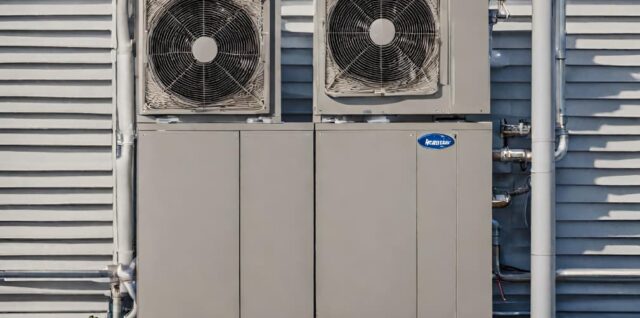Ensuring the efficient flow of fluids like air, water, or refrigerants is paramount. This efficiency is made possible through the use of specialized devices known as flow switches. Flow switches play a crucial role in HVAC systems, helping maintain optimal performance and preventing potential issues. In this blog post, we’ll dive into the different types of flow switches used in HVAC applications and explore their practical uses.
Understanding Flow Switches
Before delving into the specific types and applications, let’s first understand what flow switches are and why they are indispensable in HVAC systems.
Flow switches are sensors designed to detect the presence or absence of fluid flow within a pipe or duct. They work based on the principle of fluid movement, either by measuring the flow rate or detecting a minimum flow threshold. When fluid flow falls below or exceeds a set parameter, the flow switch triggers a response, often in the form of an electrical signal, to control various components within the HVAC system.
Types of Flow Switches
Paddle Flow Switches
Paddle flow switches are among the most commonly used in HVAC systems. They feature a paddle or vane inserted into the fluid flow path. When fluid flow reaches a certain velocity, it pushes the paddle, activating a switch. Paddle flow switches are ideal for applications where a minimum flow rate must be maintained, such as preventing heating element damage in electric heaters.
Differential Pressure Flow Switches
Differential pressure flow switches operate by sensing the pressure drop across a restriction in the flow path. As flow increases or decreases, the pressure differential changes, triggering the switch. These switches are suitable for applications that require precise flow control, such as maintaining the flow rate of chilled water in a cooling system.
Magnetic Flow Switches
Magnetic flow switches utilize the principles of electromagnetic induction to detect fluid flow. When fluid flows through a magnetic field, it generates a voltage, which is used to activate the switch. Magnetic flow switches are often used in larger HVAC systems, such as commercial or industrial installations.
Vortex Flow Switches
Vortex flow switches detect fluid flow by monitoring the vortices or swirling patterns created when fluid passes through an obstruction. The frequency of vortices is proportional to the flow rate, allowing the switch to measure flow. These switches are valued for their accuracy and are commonly found in HVAC systems that require precise flow control.
Applications in HVAC Systems
Chilled Water Systems: Flow switches in chilled water systems help maintain the desired flow rate, ensuring efficient heat transfer in cooling coils.
Heating Systems: In heating systems, flow switches prevent overheating by ensuring a minimum flow rate of coolant through heat exchangers.
Air Handling Units (AHUs): Flow switches in AHUs detect air flow, ensuring that fans and dampers operate correctly to maintain air quality and temperature.
Boilers: In boiler systems, flow switches protect equipment by verifying the presence of water flow before ignition, preventing dry firing.
Cooling Towers: Flow switches are essential in cooling towers to monitor water flow and prevent damage to pumps and heat exchangers.
Selecting the Right Flow Switch
Choosing the appropriate flow switch for an HVAC system depends on several factors:
Flow Rate Requirements: Consider the required flow rate for your specific application. Different flow switches are designed to handle varying flow rates, so choosing one that matches your needs is essential.
Fluid Type: Identify the type of fluid (e.g., water, refrigerant, air) that will flow through the system. Different fluids may require different types of flow switches to ensure compatibility and accurate measurements.
Pipe or Duct Size: Take into account the size of the pipes or ducts where the flow switch will be installed. Ensure that the switch fits comfortably within the system.
Environmental Conditions: Consider the environmental conditions where the flow switch will operate. Factors like temperature, humidity, and exposure to corrosive substances can affect the switch’s performance and longevity.
Application-Specific Needs: Evaluate the specific requirements of your HVAC application. Some applications may demand high precision, while others prioritize durability and reliability.
Best Practices for Flow Switch Maintenance
Proper maintenance is essential to ensure flow switches continue to function optimally. Regular practices include:
Inspecting for Debris: Regularly check for debris or buildup that may obstruct flow. Cleaning the switch and its surrounding area can prevent false readings and system malfunctions.
Calibration: Periodically calibrate flow switches as needed to maintain accurate measurements. Calibration ensures that the switch provides reliable data for your HVAC system.
Timely Replacement: If a flow switch becomes worn out or damaged, it’s crucial to replace it promptly. Delayed replacement can lead to system inefficiencies and potential damage.
Conclusion
Johnson Controls flow switches are the unsung heroes of HVAC systems, quietly ensuring fluid flow and system efficiency. By understanding the types of flow switches and their applications, HVAC professionals can make informed choices to maintain reliable and efficient HVAC systems, providing comfort and climate control to homes, offices, and industrial facilities. These unassuming devices play a vital role in keeping the world comfortable and cool, one flow at a time.
